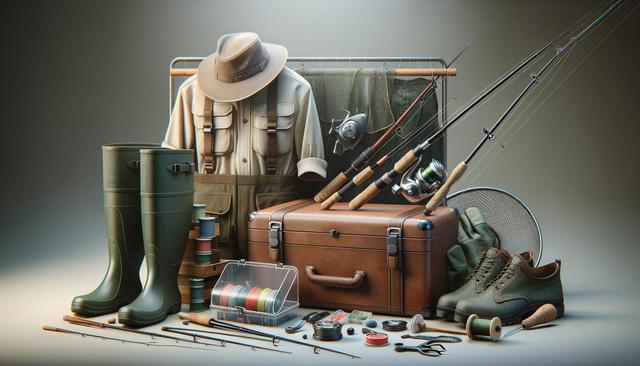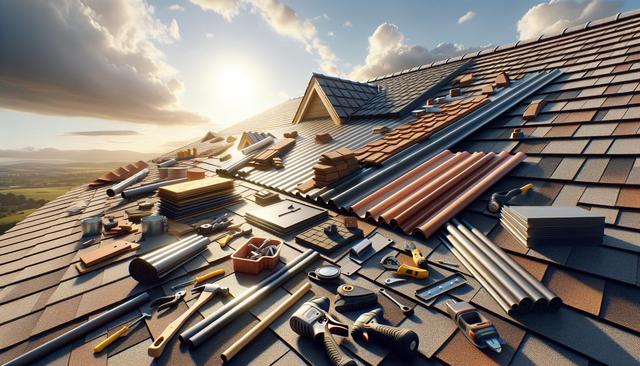Fly Rods and Reels: The Core of Your Setup
At the heart of every fly fishing setup are the rod and reel. These two pieces of equipment are the primary tools you’ll rely on, and choosing ones that suit your style and environment is crucial. Fly rods come in a range of weights, lengths, and actions, each suited to different fishing conditions. For example, a lightweight rod is ideal for delicate casts on small streams, while a heavier rod can handle larger fish in windy or open areas.
Reels, on the other hand, need to balance well with your rod and provide smooth drag systems to handle the sudden rushes of stronger fish. When selecting a reel, consider the following features:
- Durable construction materials like machined aluminum or composite
- A sealed drag system for performance in wet conditions
- Weight that complements your chosen rod
Pairing the right rod and reel ensures casting accuracy, comfortable handling, and better control over your catch. For many anglers, this combination forms the foundation of their gear.
Essential Lines and Leaders
Fly lines, backing, leaders, and tippets are often overlooked by beginners, but they play a vital role in casting and presentation. Each element serves a specific function, and understanding how they work together can significantly improve your effectiveness on the water.
Fly lines are generally categorized by weight and taper. A weight-forward line is commonly used because it helps with longer casts and precise placement. Backing provides extra length in your reel for fish that run far, while leaders and tippets offer the final connection to your fly. Key considerations when choosing these components include:
- Matching line weight to your rod
- Choosing the right taper for your fishing environment
- Using fluorocarbon tippets for better invisibility in clear water
High-quality lines and leaders not only improve casting performance but also reduce the chances of losing fish due to line breakage or poor knot strength. It’s a worthwhile area to invest in for any fly fishing enthusiast.
Flies and Fly Boxes: The Art of Imitation
Flies are the lures of fly fishing, and they come in an incredible variety designed to mimic insects, baitfish, and other aquatic organisms. Having a diverse selection of flies allows you to adapt to the conditions and the behavior of the fish. Whether you are fishing dry flies on the surface or nymphs below, variety is key.
Keeping your flies organized and protected is just as important. Fly boxes are designed to keep your collection accessible and in good condition. When building your fly collection, consider including:
- Dry flies for surface strikes
- Nymphs for subsurface fishing
- Streamers for aggressive predatory fish
- Terrestrials for summer fishing
Each type targets specific fish behavior and water conditions. By understanding what works seasonally and regionally, you can tailor your collection to suit your usual fishing spots. A well-stocked fly box means you’re always prepared for what’s biting.
Apparel and Accessories for Comfort and Safety
Fly fishing often takes you into rivers, lakes, and streams where comfort and protection from the elements are important. Investing in proper apparel ensures you can focus on fishing rather than being distracted by discomfort. Waders and boots are essential for accessing deeper water, while technical clothing helps regulate temperature and stay dry.
Some key apparel items to consider include:
- Breathable waders with reinforced knees
- Wading boots with good grip for slippery rocks
- Moisture-wicking shirts and UV-protective outerwear
- Waterproof jackets for sudden weather changes
In addition to clothing, accessories such as polarized sunglasses help reduce glare and improve underwater visibility. A comfortable fishing vest or chest pack can keep your gear within reach while allowing freedom of movement. These items ensure longer, more enjoyable outings even in changing weather conditions.
Tools and Gadgets That Make a Difference
Beyond the core gear, there are several tools and gadgets that no fly fisherman should go without. These small but impactful items make tasks like tying knots, handling fish, and changing flies easier and more efficient. Having the right tools on hand can be the difference between a smooth experience and a frustrating one.
Some must-have tools include:
- Nippers for cutting line cleanly
- Forceps or hemostats for hook removal
- Fly floatant to keep dry flies buoyant
- Line straighteners and tippet holders
Other handy accessories include a landing net with a rubberized mesh to protect fish, and a headlamp for early morning or evening sessions. While these items may seem small, they contribute significantly to a smooth and enjoyable fly fishing experience. Over time, you’ll find which tools best complement your fishing style and help you stay efficient on the water.
Conclusion: Building a Gear Setup That Enhances the Experience
For anyone passionate about fly fishing, assembling a reliable and functional gear setup is part of the journey. While it may take time and experimentation to find the right combination, understanding what each piece of gear contributes helps streamline the process. From rods and reels to flies and apparel, each element enhances your comfort, effectiveness, and enjoyment on the water.
Whether you’re just starting out or refining your current gear, focusing on quality and function will serve you well in the long run. Fly fishing is as much about the experience as it is about the catch, and the right gear ensures every outing is one to remember. With thoughtful choices and a bit of preparation, your next day on the water can be even more rewarding.




Leave a Reply